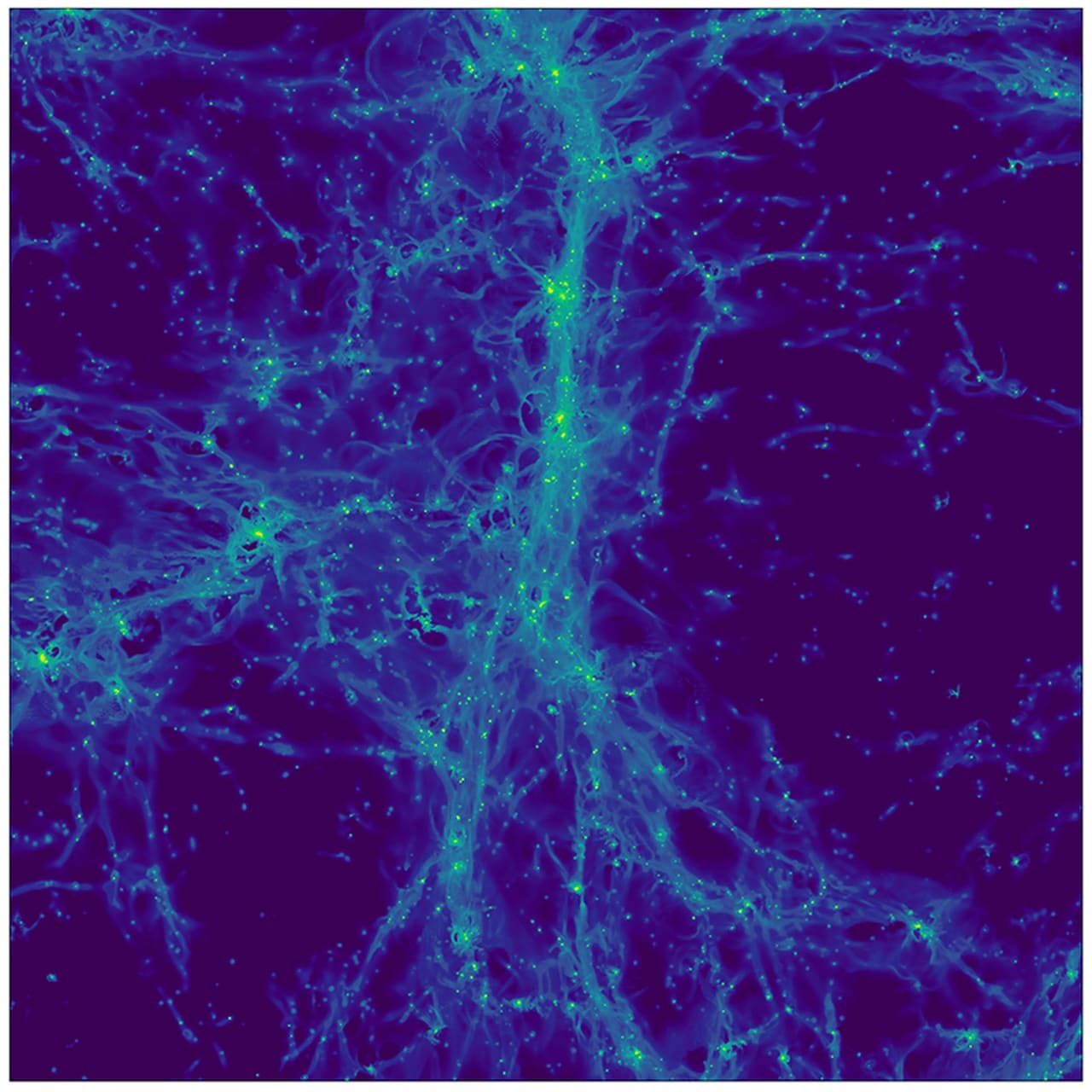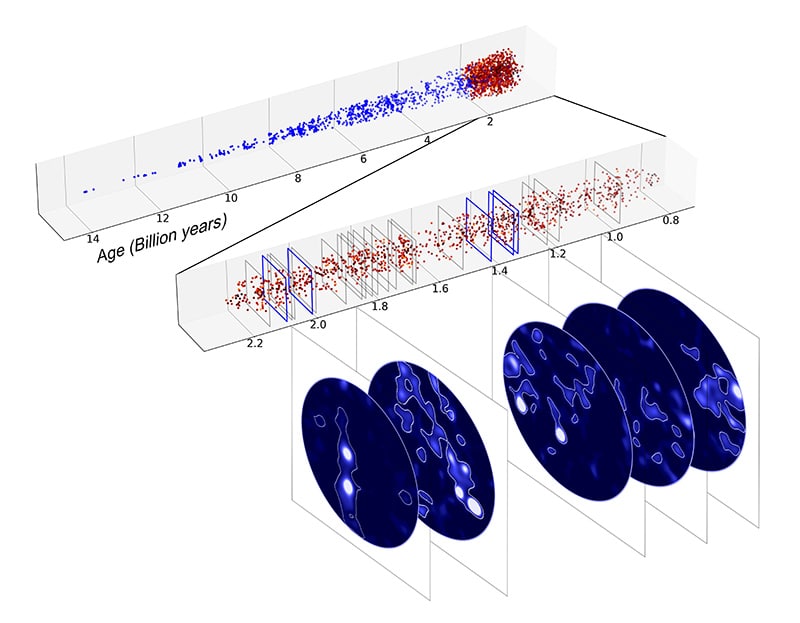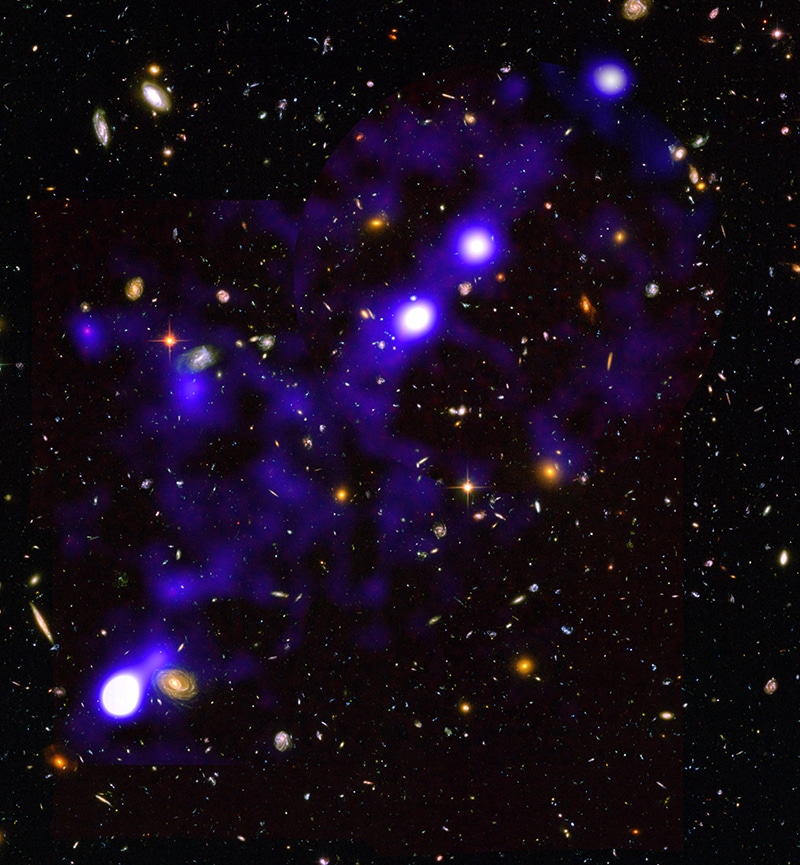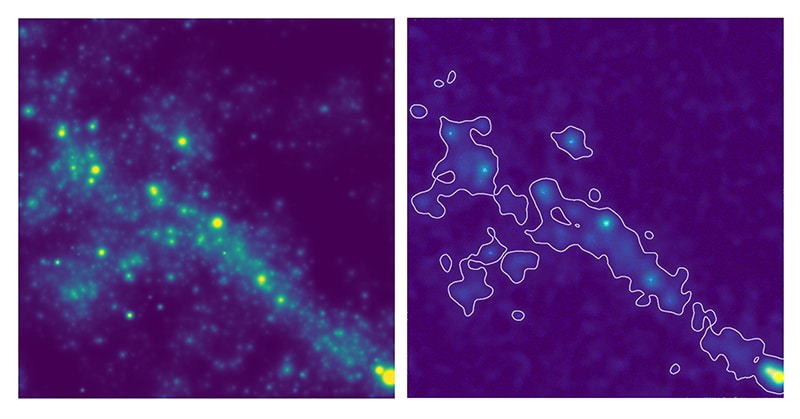
The Big Bang model and galaxy formation have predicted the gas filaments in which galaxies form, called the cosmic web. But, until now, we don’t have an image of such an object.
Using the MUSE1 instrument installed on ESO’s Very Large Telescope in Chile, astronomers now captured the cosmic web images in the early Universe for the first time.
Astronomers pointed the telescope at a single region of the sky for over 140 hours. The region selected forms part of the Hubble Ultra-Deep Field, which was the deepest image of the cosmos ever obtained.

It took them eight months to carry out this exceptional observing campaign. This was trailed by a year of data processing which interestingly uncovered light from the hydrogen filaments and images of several filaments as they were one to two billion years after the Big Bang.
However, the team’s biggest surprise was when simulations showed that the light from the gas came from a hitherto invisible population of billions of dwarf galaxies spawning a host of stars.

Although these galaxies are too faint to be detected individually with current instruments, their existence will have significant consequences for galaxy formation models, with implications that scientists are only just beginning to explore.
Senior author Roland Bacon, a scientist at the Centre for Astrophysics Research in Lyon, told AFP, “After an initial period of darkness, the Universe erupted with light and produced a huge number of stars.”
“One of the big questions is what ended that period of darkness, leading to a phase in the early Universe known as re-ionization.”

Until now, astronomers know that the web was limited to a few specific regions, particularly in the direction of quasars, whose powerful radiation acts like car headlights, revealing gas clouds along the line of sight. However, these regions do not disclose the entire network of filaments- where galaxies form.
Emanuele Daddi, a researcher at Atomic Energy Commission who did not take part in the study, said, “These findings are fundamental. We have never seen a discharge of gases on this scale, which is essential for understanding how galaxies form.”
Journal Reference:
- R. Bacon said, “The MUSE Extremely Deep Field: The cosmic web in emission at high redshift⋆. DOI: 10.1051/0004-6361/202039887
Continue reading Astronomers captured images of the cosmic web for the first time on Tech Explorist.
0 comments:
Post a Comment